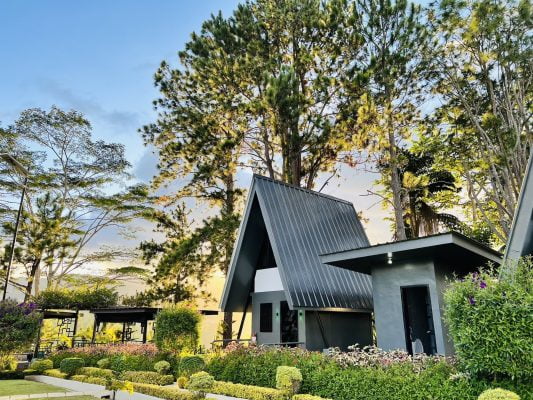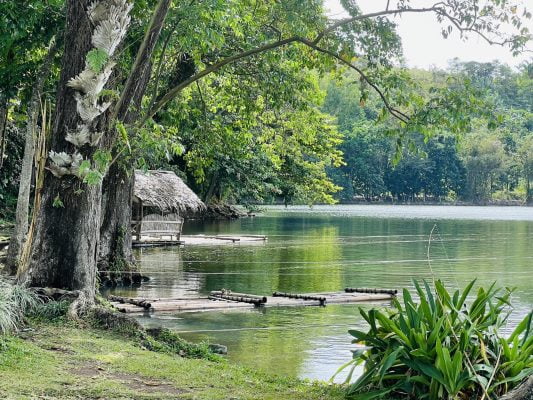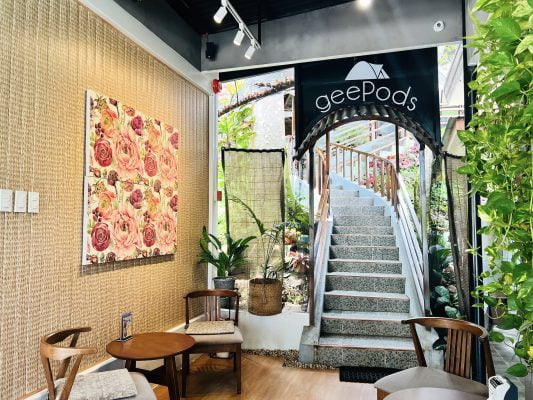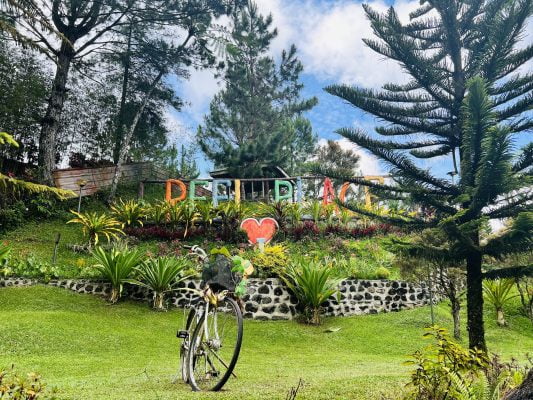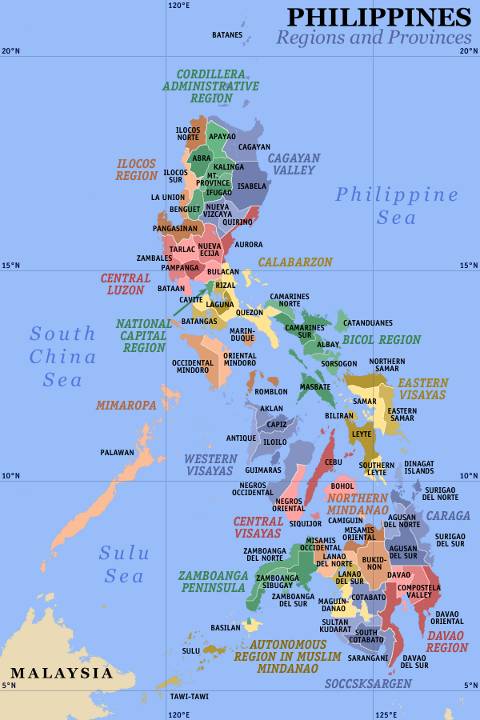
© Eugene Alvin Villar, 2003
Let us take you through the regions of the Philippines and what they have to offer in terms of natural wonders, manmade attractions, food and festivals.
National Capital Region
This is the seat of Philippine Government where most national offices are located including the Malacañan Palace, Supreme Court, Senate of the Philippines and the House of Representatives. The region is collectively known as Metro Manila which covers the City of Manila and other 15 cities surrounding it.
Most international visitors fly to Manila through the Ninoy Aquino International Airport located along the boundary between Pasay City and Parañaque City. Those who opt for sea travel may also enter the region through the Manila Seaport which is also the chief seaport in the country.
Metro Manila is the busiest region in the Philippines; there is no shortage of accommodations, restaurants, shopping centers and entertainment venues for both residents and visitors. It is a cornucopia of different cultures, traditions and culinary delights so there is no distinct specialty in the region.
Key attractions:
- Intramuros
- Luneta Park
- Binondo (Manila Chinatown)
- SM Mall of Asia
- Manila Bay
Cordillera Administrative Region
Centered on the Cordillera Mountain range of Central Luzon, the Cordillera Administrative Region is the only land-locked region in the Philippines. It is composed mainly of highlands which are inhabited by indigenous tribes like the Ifugaos, Ibalois and Kalingans.
Baguio City is the busiest part of the region; it is the main tourist hub and commercial center with numerous attractions and businesses.
Temperatures in the region are a few degrees colder than Metro Manila, making it an ideal escape from the heat especially during the summer season. In fact, Baguio City is recognized as the Summer Capital of the Philippines. The mild weather in the region is also conducive for growing strawberries for which Baguio City is famous. Other products include peanut brittle, ube jam and sundot kulangot, a sweet snack made from glutinous rice.
Key attractions:
Ilocos Region (Region 1)
Located on the northwestern coast of Luzon, the Ilocos Region faces the South China Sea to its west and the Cordilleras to its east. It has four provinces: Pangasinan, La Union, Ilocos Sur and Ilocos Norte. Ilocos is known has the home of the affluent Marcoses whose patriarch became the only dictator President of the Philippines. Much attention has been brought to the Ilocos Region due to the recent efforts of the Tourism Department to promote its natural and manmade attractions.
The Ilocos Region is largely historical and it also features stunning beaches and wonderful food. It is home to the Pagudpud Beaches which are some of the best in the country. Surfing is also a popular pursuit in the southern towns in La Union. And one must never leave the region without tasting bagnet (deep fried pork), longganisa (sausage), empanada (stuffed pastry) and pinakbet (stir-fried vegetables).
Key Attractions:
- Vigan City (UNESCO World Heritage Site)
- Bangui Windmills
- La Paz Sand Dunes
- Fort Ilocandia
- Paoay Church
- San Juan, La Union (surfing)
- Hundred Islands, Pangasinan
Cagayan Valley (Region 2)
Situated between the Sierra Madre and Cordillera Mountain Ranges, the Cagayan Valley is considered as the largest region in the Philippines. Its area includes the northernmost islands of Batanes and Babuyan. Cagayan River, the longest in the Philippines, runs through the center of the region and empties into the Luzon Strait.
Cagayan Valley is agricultural and the coastal towns are involved in fisheries. The region claims to be the Tilapia Capital of the Philippines, with production growing in huge proportions in recent years.
Key Attractions:
- Callao Cave
- Lighthouses of Batanes
- Magat Dam Tourist Complex
Central Luzon (Region 3)
Central Luzon sits on vast plains mainly used for agriculture, particularly rice production which has earned it the nickname “Rice Bowl of the Philippines”. It spans the entire central area of Luzon with the South China Sea to its west, the Philippine Sea to its east.
San Fernando City is the regional center located in the province of Pampanga which is known as the Culinary Capital of the Philippines. This means that a journey to Central Luzon can be a gastronomic experience; it is common knowledge that the people of Pampanga are excellent cooks.
Key Attractions:
- Subic Bay Freeport Zone
- Mt. Arayat
- The historical town of Baler
- Corregidor
- Sea Turtles of Morong
- Barasoain Chuch
Calabarzon (Region 4A)
The name is actually an acronym for the provinces in the region: Cavite, Laguna, Batangas, Rizal and Quezon. It is also known as Southern Tagalog Mainland. The region is mainly known as the seat of the revolution against the Spanish in the 19th century and a number of historical buildings and landmarks that speak of its tumultuous past.
Different attractions are featured in different provinces in the region. Cavite has plenty of historical attractions while Batangas has a lot to offer when it comes to natural wonders. Laguna also has some attractions but it is known more as the producers of the delectable buko pie (much like the apple pie but with coconut meat instead of apple).
Key Attractions:
- Tagaytay City
- Taal Lake and Taal Volcano
- Anilao, Batangas (diving)
- Rizal Shrine in Calamba, Laguna
- Aguinaldo Shrine in Kawit, Cavite
- Pahiyas Festival in Lucban
- Enchanted Kingdom Theme Park
Mimaropa (Region 4B)
The region is composed of five provinces: Oriental Mindoro, Occidental Mindoro, Marinduque, Romblon and Palawan. The name is actually a portmanteau of the provinces’ names and the region is also known as the Southern Tagalog Islands. MIMAROPA is perhaps one of the most visited regions of the Philippines due to its archipelagic features.
The region is a treasure chest of natural attractions and ecotourism venues, with the Puerto Princesa Underground River topping the list. MIMAROPA is home to pristine beaches, challenging peaks and excellent dive sites.
Key attractions:
- Puerto Galera
- El Nido, Palawan
- Coron, Palawan
- Dive sites in Romblon
- Tres Reyes Marine Sanctuary in Marinduque
- Moriones Festival in Marunduque
- Tubbataha and Apo Reefs
Bicol Region (Region 5)
Collectively called Bicolandia, the region is located on the southeastern end of Luzon. It has six provinces: Masbate, Catanduanes, Sorsogon, Camarines Sur, Camarines Norte and Albay. Bicol is home to a good number of volcanoes both active and dormant which results to a lot of natural attractions like crater lakes and hot springs. The people of Bicol are known for their spicy cuisine with chili ice cream being one of their latest most popular innovations.
Key Attractions:
- Mt. Mayon
- The whale sharks of Donsol, Sorsogon
- CamSur Watersports Complex
- The beaches of Camarines Norte and Catanduanes
Western Visayas (Region 6)
Western Visayas is another one of the most visited regions in the Philippines owed mainly to the world-famous Boracay Island. But the region is more than just the home of Boracay, it also features many other natural wonders and progressive cities.
Due to the large volume of tourists visiting the region, Western Visayas is served by three international airports and four domestic airports. There are also sea vessels that carry tourists to the port of Iloilo City, the regional center.
Key Attractions:
- White Beach, Boracay
- Masskara Festival in Bacolod
- Ledesma Ruins, Talisay
- Dinagyang Festival of Ilo-ilo City
Central Visayas (Region 7)
Central Visayas has three main islands: Cebu, Bohol and the western half of Negros (Negros Oriental), and there’s the small island of Siquijor. The regional center is Cebu City which also known as the Queen City of the South. Central Visayas is known as the seat of the Catholic faith in the Philippines and is also the site of the first documented battle against the conquistadors. Explorer Ferdinand Magellan met his demise near the waters of Mactan, Cebu.
The region is accessed through the Mactan-Cebu International Airport and several other domestic airports in the neighboring cities and towns. There are also sea vessels that ply the waters between the islands within Visayas. When visiting the region, don’t forget to taste Cebu Lechon (roast suckling pig) and Bohol’s calamay and peanut kisses.
Key Attractions:
- Basilica Minore del Santo Nino de Cebu
- Sinulog Festival in Cebu City
- Panglao Island, Bohol
- Magellan’s Cross
- Beaches of Siquijor and Mactan
- Bantayan and Malapascua Islands
- Chocolate Hills of Bohol
Eastern Visayas (Region 8)
Due to its location on the easternmost side of the Philippine Islands facing the Pacific Ocean, Eastern Visayas is one of the wettest regions in the country. It is largely agricultural and it also depends on the aquatic resources provided by the deep seas.
The region is relatively undiscovered by tourists resulting to a good number of virgin beaches and unspoiled natural wonders. Tacloban, the regional center, has some historical sites as well.
Key Attractions:
- Sto. Nino Shrine and Heritage Museum
- San Juanico Bridge
- McArthur’s Landing
Zamboanga Peninsula (Region 9)
Located on the northwestern portion of Mindanao, the region lies on a peninsula stretching out to the Sulu Sea. The region is made up of three provinces: Zamboanga Sibugay, Zamboanga del Norte and Zamboanga del Sur. It was formerly part of the Spanish East Indies, resulting to the dominance of Spanish-speaking locals. The local dialect is now known as Chavacano which is also the name of its people.
The Zamboanga Peninsula is rich in natural resources and it features stunning beauty. However, its tourism potential is held back by the insurgencies in Mindanao. Traveling to the region is not encouraged especially to foreigners but those who come for a visit are rewarded with the wonders of Zamboanga.
Key Attractions:
- The vintas (boats with colorful sails)
- The white sand beaches of Zamboanga Sibugay
- Curacha crabs
Northern Mindanao (Region 10)
Northern Mindanao is located west of the Zamboanga Peninsula. It has five provinces including the small island called Camiguin. The regional center is the highly-urbanized city of Cagayan de Oro.
The region has a mild climate with rains evenly distributed throughout the year. It is one of the few places in the Philippines not heavily affected by monsoons, making it an ideal destination during the rainy season in the country. The region is also home to Bukidnon, an elevated province with a cold climate comparable to that of Baguio City
Key attractions:
- White water rafting along the Cagayan River
- Pineapple plantations of Bukidnon
- White Island, Camiguin
- Sunken Cemetery, Camiguin
- Katibawasan Falls
Davao Region (Region 11)
Considered the main commercial and industrial center of Mindanao, Davao Region is a progressive area centered on Davao City. It encompasses the provinces of Davao del Sur, Davao del Norte, Compostella Valley and Davao Oriental which is at the easternmost edge of the Philippine Islands.
The region is home to different indigenous tribes supported and protected by the local governments of major cities. Davao Region is blessed with the abundance of natural resources both in land and in its waters. Its proximity to Mt. Apo makes it protected from the raging storms that affect the rest of the country. It also boasts of many natural attractions and claims to provide every tourist a ‘from the mountains to the seas’ adventure.
Key attractions:
- Island Garden City of Samal beaches
- Davao Crocodile Park
- Philippine Eagle Center
- Camp Sabros, Davao del Sur
- Mount Apo National Park
- Hot springs of Compostella Valley
- Kadayawan sa Dabaw
Soccksargen (Region 12)
The name stands for South Cotabato, Cotabato, Sultan Kudarat, Sarangani and General Santos City. The region is located in south central Mindanao. The region is known to the world as the birthplace of famous boxer Manny “pacman” Pacquiao.
General Santos City and Sarangani are also famous for the export-quality tuna marketed all over the world. There are also picturesque beaches and other natural wonders within the region but tourist activity is scarce due to the conflicts in Mindanao.
Key Attractions:
- Lake Sebu
- Gumasa Beach in Glan, Sarangani
- Baras Bird Sanctuary in Tacurong City
CARAGA REGION (Region 13)
The region is located at the northwestern portion of Mindanao, facing the Pacific Ocean and the Philippine Sea. The location greatly contributes to its lure among members of the surfing circuit all over the world. Siargao, Surigao del Norte is considered the Surfing Capital of the Philippines, comparable to Hawaii and Bali, Indonesia.
Caraga region is an outdoorsman’s paradise; it offers plenty of exciting adventures involving rivers, falls, forests, islands and caves. The province of Agusan del Sur is home to the largest crocodile in captivity, Lolong which was caught in the town of Bunawan.
Key Attractions:
- Agusan Marsh
- Cloud 9, Siargao
- Enchanted River
- Hinagdanan Falls
Autonomous Region os Muslim Mindanao (ARMM)
This predominantly Muslim region covering the western side of Mindanao and the islands of Sulu and Tawi-tawi has a notorious reputation in the traveling circuit. But the reputation set aside, ARMM features natural beauty like no other; virgin beaches, mangrove forests, mountain springs and majestic waterfalls abound in the region. The people of ARMM also boasts of a rich culture showcased in their clothing, traditions and music.
Traveling to ARMM is highly discouraged my most foreign governments. It is common knowledge that there have been abductions of foreign missionaries and journalists by terrorist and rebel groups Abu Sayaff and MILF (Moro Islamic Liberation Front). If you must visit the region, be sure to take proper precautions and seek the protection of authorities.
There’s always something beautiful and exciting to discover anywhere in the Philippines. The regions may have boundaries but there’s definitely no limit to what you can experience in these islands. Travel all over the country, experience each region one at a time and you will soon find the Philippines a blessed paradise.


